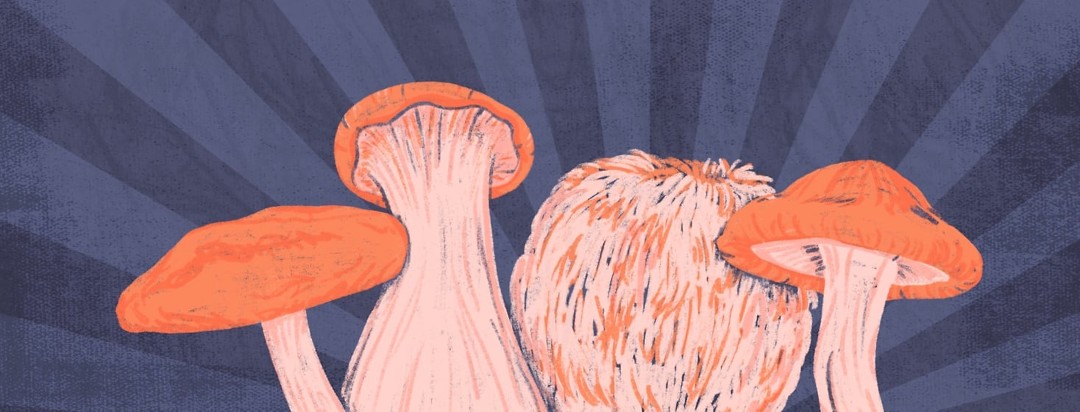Diabetes and the Forgotten Kingdom of Mushrooms
Diet and diabetes are inseparable; everything we consume influences our biome and as diabetics, one factor that is influenced more easily is, of course, blood glucose. So with diabetes, diet is usually modified to limit both sugars and carbohydrates. Thus, a common topic of discussion among diabetics is what to eat or what not to eat.
Some people promote a plant-based solution, while others promote the opposite and rely heavily on animal products and meat for sustenance. However, we rarely hear a discussion about the third kingdom of life: Fungi! More specifically, mushrooms. This is a review of what mushrooms are and why they can be incorporated into our diets, without worry, and with wonderful benefits.
What are mushrooms exactly?
There has recently been a renaissance in the study of mushrooms; or mycology. This follows a fungi-phobic era where mushrooms were thought of as a danger when in reality, the vast majority of mushrooms are not-toxic, quite edible, and medicinal. As research deepens and culinary arts experiment we are beginning to see the true magic of mushrooms, but not in the psychedelic sort of way. But what is a mushroom exactly?
A mushroom is the fruit-body of an expansive underground network of mycelium. Mycelium is the most plentiful life on earth and also the largest single organism! Though, you’d hardly know it’s there under each footstep. It's easiest to understand mycelium as the recycling system for the planet. It breaks down fallen trees, leaves, and animals to replenish soil vitality and support new life. Mushrooms are just a brief glimpse into this beautiful system and a small window into a realm of solutions.
Mushrooms as food
I hated mushrooms. For most of my life, I thought they were scary and gross. I had an aversion to mushrooms, supported by the hegemony that they are as terrible and dangerous as I thought. The truth is, I knew very little about what a mushroom was, how many different types there were, or how to cook with them.
How mushrooms might be able to help with blood glucose management
As I learned, I became passionate about how wrong I was. Mushrooms can do everything from protecting bee colonies from illness, to cleaning up oil spills, to making a perfect faux scallop substitute. As a vegan of 5 years, mushrooms have become a staple of my diet and are a common substitute for meat. Mushrooms are fantastic as a low-glycemic, low-carb, nutritious, and delicious addition to any diet.
Types of mushrooms
Here’s a list of my favorite mushrooms and how I like to cook them. Starting with the most common to the most eccentric.
Portabello
Probably the most commonly known edible mushroom, being used in many restaurants. In 100 grams of portobello mushrooms (a little over 1 cup) there are only about 3g of carbohydrates. I like to slice the caps into strips for "fajitas" or use the whole cap as a “patty" in a burger-like format.
Shiitake
The most commonly consumed mushroom worldwide. I love to sauté shiitake or throw them in a soup like ramen or miso. In a 100g serving, there are only about 7g of carbs. However, in even a small serving of shiitake mushrooms, the consumer gets the wonderful anti-inflammatory benefits that they have been highly regarded for.
King Oyster (King Trumpet)
These are more exciting to cook with, in my opinion, because they can be cooked in a variety of ways. One way I like to cook king oyster mushrooms is by slicing the stem into sections to make vegan “scallops”, saving the caps to sauté later. Or, slicing the silhouette (length direction) of the mushroom and making a vegan-thai satay on a skewer! They are also low in carbs, at about 6g of carbs per 100g of mushrooms.
Lions mane
A rare mushroom to find in the wild and a bit more expensive to buy in stores. My favorite thing to make with lions mane is tacos! Slowly dry sauté them in a pan, with a bit of salt, and they make a great vegan “fish" taco! As a bonus to its deliciousness, it has many nootropic medicinal properties too. They are being studied as a treatment for Alzheimer's and other neurodegenerative illnesses. An exciting medicinal quality that deserves an article of its own in the future.
Where can I find mushrooms?
Don't pick your mushrooms from the wild, unless with an experienced mycologist. While the mushrooms listed are not dangerous, there may be look-a-likes that are. Just as berries can be toxic if misidentified, so can mushrooms. Luckily, the mushrooms I listed can be found at most grocery stores, with the exception of lions mane as a rarity. As a low carb and low glycemic food, mushrooms are a great option to add variety to diabetic-friendly diets.

Join the conversation